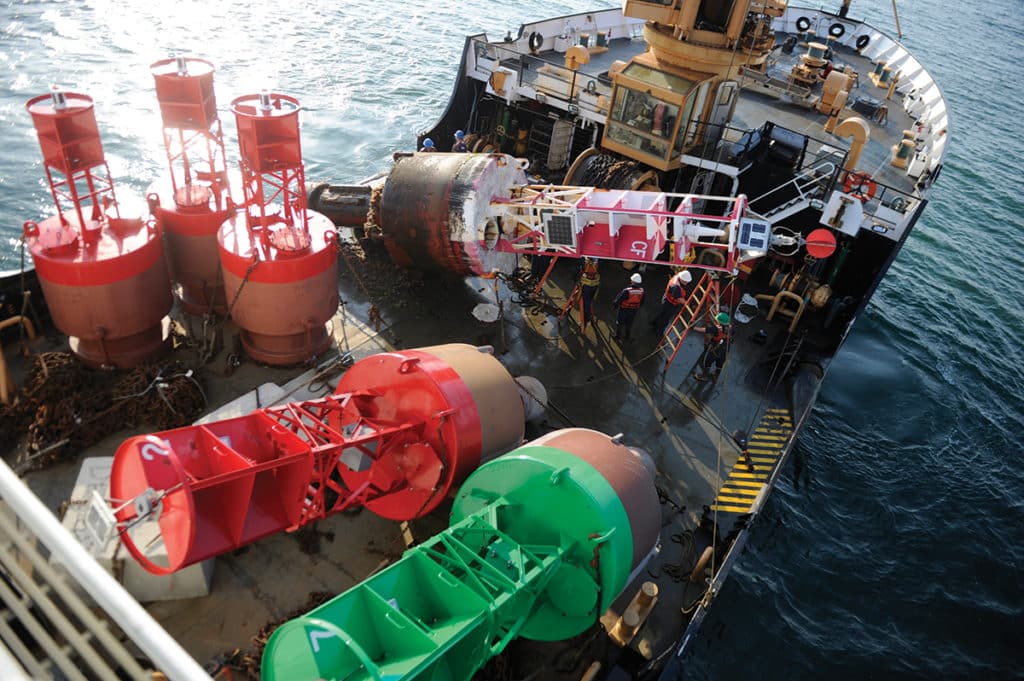
I once went tuna fishing in December with a guy who called himself Squid Vicious. It was 38 degrees on the water that day, but even though I was layered to the gills, I have never felt colder. That was the first thing I learned that day, that it’s always colder on the water than you think it will be. The second came courtesy of Squid, who told a story of his electrical system giving out offshore one day when it was below freezing, and the utter realization that no one else was on the water or even remotely thinking about going out. He told himself at the time, between his desperate string of expletives, that he had never felt more alone in his life. Obviously, he made it home, but it drove home the second point: When it comes to boating in winter, main-season expectations don’t apply. Here are a few other things to take note of should you decide to hit the water this winter.
Bye-Bye, Buoys
In cold weather climes, the U.S. Coast Guard replaces its regular aid-to-navigation buoys with smaller, more basic buoys. This is because the buoys are prone to damage from ice floes or upheaval from strong winter storms. So instead of large cans with lights or sound signaling devices to help guide you through a navigable channel, you’ll have to try to make your way through harder-to-find winter buoys. This can make things tricky at night or in low-light conditions, so expect to rely more on your electronics to guide your way, and proceed with caution.
Leave a Trace
As Squid Vicious found out, if you get in a jam in cold weather, there may not be anyone else around to help you. That’s why it’s imperative to tell someone your plans — specifically where you are going and how long you plan to be out. Tell that person, or people, that you’ll call or text as soon as you get off the water. That way, they’ll know when they don’t hear from you that it’s time to find out where you are, and whether you need help.
Keep It Charged
The colder it gets, the more prone your boat’s batteries are to losing their charge. So whether your boat is in a slip or on a trailer, it’s important to keep the batteries hooked up to a maintenance charger so they’ll have enough juice to get the boat started and run your electronics on the water. On that note, if you’re out on the water and you shut down the engine and the alternator isn’t refreshing the battery, keep your electronics use to a minimum to ensure you have enough juice to get started again.
Snow Loads
Your boat might be self-bailing, but snow won’t drain out of the scuppers. If it snows, go down to your boat and shovel it out: The weight of snow can force drains and through-hull fittings underwater, back-flooding your boat.
Cold Boating Fashion
The old saw for boating in the off-season is to dress for the water, not the weather. That can be taken two ways. Often it feels at least 10 to 15 degrees colder on the water than it does on land. If it’s 40 degrees in the backyard, dress like it will be 30 degrees on the water. Secondly, water robs the body of heat 25 times faster than air does, and a person immersed in 50-degree water can reach exhaustion in less than 30 minutes. Wear water-wicking base layers with a waterproof and windproof outer layer, and — please — wear a life jacket.









